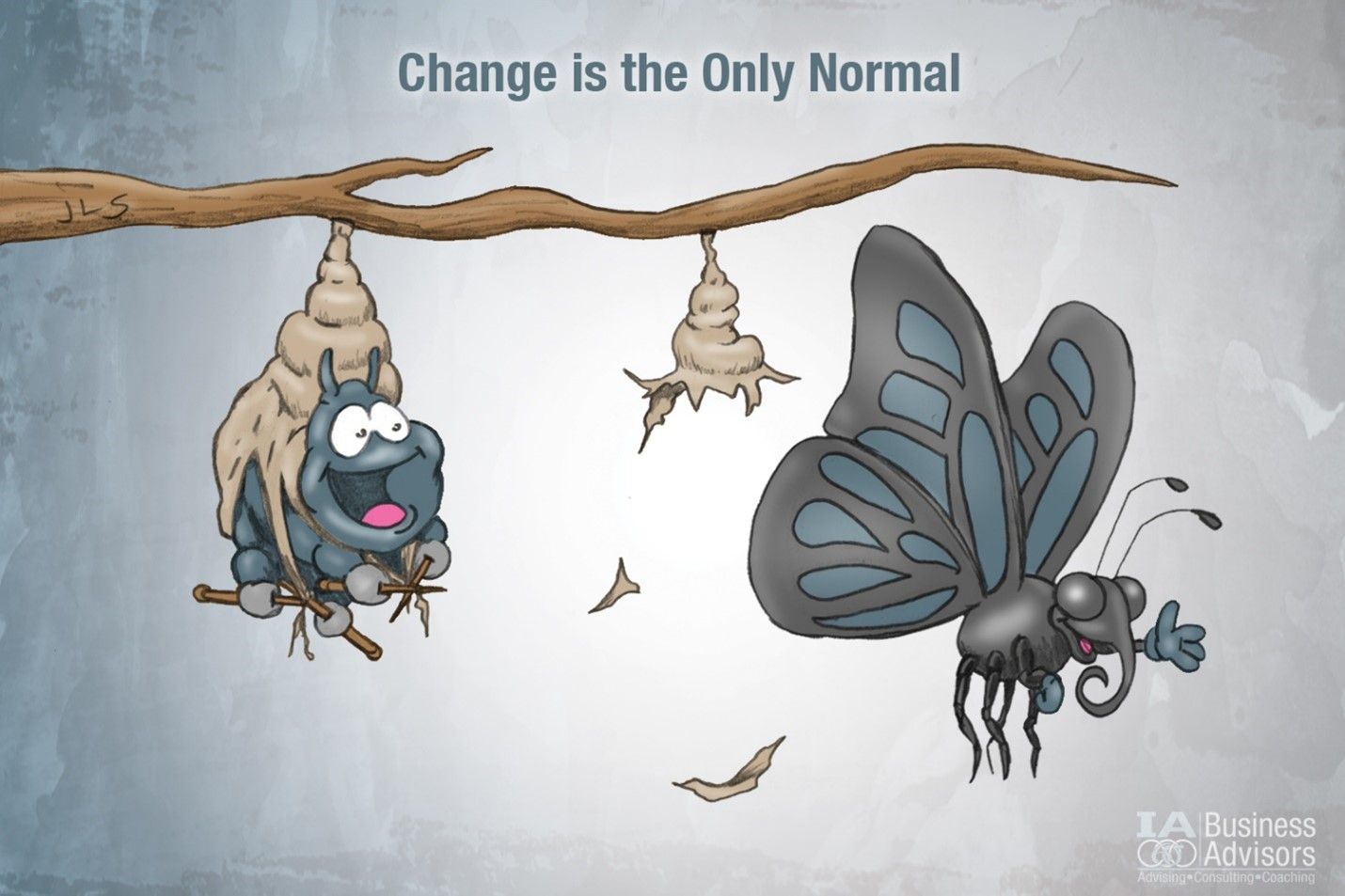Change is the Only Normal

Business consulting strategies
Written by: Brian Smith & Mary Smith
Like most of the world, we have been thinking more about things that are out of our control. The amount of time we have to ourselves or with our families is unprecedented in our lifetimes. We find ourselves streaming more shows and reading more news articles. There is a phrase we keep reading, “This is the new normal.”
As business advisors, we deal with exceptions all the time. We are trained to deal with the uncertainties of life and are now pondering this phrase, “This is the new normal.” As leadership development consultants and influence-understanding specialists, our view is that COVID-19 is an exception, not the new normal. However, this phrase continues to parrot around the internet and is seeping into our everyday lives.
COVID-19 is not the new normal. People describe this as the new normal to ease their anxiety of change. If they can find a foundation by deeming this a new normal, they may feel that things aren’t as chaotic. By defining something you give it meaning; meaning gives people purpose and understanding. This foundation and purpose ease the anxiety around change. Therefore, if they can feel more at ease thinking “this is the new normal” they will tell themselves that even if they don’t believe it.
We would go as far as to say there is no normal, but that wouldn’t sit well with most individuals. The reason we are inclined to say this is because we feel that there is no way to define true normal. It’s subjective to each individual and philosophical at best. People need to feel like they have a normal to feel secure. In reality, change is the only normal. There has never been and never will be a normal, just change. We define things as “normal” so we don’t have the face the vastly open possibilities of change or keep an open mind.
So, what exactly is this “new normal” that everyone is talking about? Being shut inside? Not being able to socialize? Mass businesses being closed or shut down? Having to stand six feet apart when shopping at the grocery store, or not being able to use reusable bags? The very idea that this life is our new normal is, honestly, quite sad. If people really believe that we are going to be stuck like this forever, they have lost touch of reality. We won’t be quarantined forever, we will be able to socialize again, businesses will come back or reopen, and we will be able to use our reusable bags again.
We predict that, in the near future, everything will return to how it was with very minor adjustments. Yes, there will be tragedy and struggle. Yes, there will be lives, properties, and businesses lost. Yes, we will face challenges, but they won’t be anymore challenging than what humans have faced in the past. Rather than tackling this challenge and the change that comes with it, people would rather define this as our “new normal.”
Lives are going to change, but that doesn’t mean that life itself will change. Some will experience a “new normal” if they become shut ins or germaphobes. However, there have always been these kinds of people, and for those that do become shut ins or germaphobes due to COVID-19 this will be their “new normal” rather than societies new normal. Time will progress. We will adapt, learn, and evolve, as humans have always done. We will persevere and we will return to “normal.”
Humans have an amazing capacity to
overcome tragedy and take on seemingly insurmountable challenges. Humans move past tragedy, with short attention spans, and ignore (to a fault) the lessons of history. History shows us that we will make it through this. If you can accept that change is the only normal, things won’t seem as chaotic. This acceptance opens doors to new possibilities for the future, one where we are all better prepared for change. There is so much we can learn from the experience of COVID-19, and one of them is that change is the only normal.












